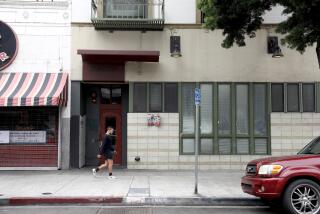Attacks Turned His Deal of Deals Into Dust
- Share via
In five decades of deal-making on the world’s toughest piece of real estate, Larry Silverstein carved out a reputation as a clever and tough negotiator, but he especially stood out as a long-range thinker who more than once rebounded from incredible strokes of bad luck.
Now, Silverstein, 70, has gained the grim distinction of being the unluckiest real estate magnate in American history.
Less than two months before terrorists leveled the World Trade Center, Silverstein and his partner Westfield America Inc. took possession of the two monolithic towers in a ceremony he described as the crowning moment of his life.
It’s been a life full of philanthropic work--he’s been president of the United Jewish Appeal in New York--and big-ticket business deals. Using all the wiles that had carried him through boom and bust before, Silverstein had beat out three high-powered suitors to win a $3.2-billion, 99-year lease on the complex.
“There’s nothing like it in the world,” he said then. “It is such a spectacular asset.”
Coming out of seclusion only briefly last week, Silverstein told the Wall Street Journal that he was struggling to cope with the human toll of the attack. But, characteristically, he was to carry on.
“It would be the tragedy of tragedies not to rebuild this part of New York,” he said. “It would give the terrorists the victory they seek.”
Such resilient talk fits the pattern of Silverstein’s many triumphs over adversity.
Even in his quest for the twin 110-story towers, Silverstein had to overcome two events that would have stopped a man of lesser will.
In February, five days before final bid documents were due, Silverstein was struck by a drunk driver on East 57th Street. He landed in the hospital with a broken pelvis. But, not breaking stride in his endeavor, Silverstein summoned lawyers and agents to his bedside to complete the voluminous submittal.
Then, in April, the Port Authority of New York and New Jersey stung him and his group of investors by selecting a higher bidder.
But Silverstein, who is renowned for his patience, raised his bid and waited. In time negotiations between his competitor and the Port Authority broke down. He stepped in, and the towers were his.
It was widely reported in New York’s financial media that Silverstein was far more skillful in dealing with the Port Authority, whose ponderous negotiating style he studied while building 7 World Trade Center, a 45-floor building added to the center in the 1980s. That building also collapsed in the attack.
Silverstein entered the real estate business in the 1950s with his father’s leasing firm. Observing that there was more money in owning, he copied a tactic of syndicator Harry Helmsley, raising money from tenants around a building on East 23rd Street to buy it.
The family business, which included Silverstein’s brother-in-law Bernie Mendik, moved up to more posh neighborhoods.
One of its early coups was buying 711 5th Ave. from Columbia Pictures in 1977 for $11.5 million. Six years later, they sold it for $57.6 million to Columbia’s partner, Coca-Cola Co.
After Mendik and Silverstein’s sister divorced, the partners split up, beginning a fierce competition between them. Mendik sold out to Vorondo Realty, the firm that briefly held the negotiating rights to the World Trade Center.
In in the early 1980s, when he feared losing his deal to build 7 World Trade Center, Silverstein pressed ahead despite having not signed a major tenant. At one point, he thought Wall Street giant Solomon Inc. would move in, until a rival lured the firm away.
Then in 1986, Silverstein was so sure he finally secured a star tenant--Drexel Burnham Lambert Inc.--he bought a full-page ad of himself in a football uniform crossing the goal line. A few days later, Drexel kingpin Ivan Boesky turned state’s evidence in the trading scandal that would kill the firm.
Silverstein finally got a tenant when Solomon returned in 1987.
By then, New York real estate was crumbling under the recession.
Silverstein’s empire shook. Lenders pulled out of construction projects and took back properties he owned in Miami and New York.
He was credited with riding out the crisis by cooperating with the lenders, who in some cases let him continue to manage the buildings they repossessed.
“He dealt with his lenders so they never walked away angry,” Arthur Sonnenblick, a senior managing director at the investment bank Sonnenblick-Goldman Co. told Crain’s New York Business in a May interview.
When real estate stated to rebound in the 1990s, they backed him again. By then, Silverstein had brought two of his children, Roger and Lisa, into the firm.
It was reported he intended to leave them the World Trade Center.
More to Read
Inside the business of entertainment
The Wide Shot brings you news, analysis and insights on everything from streaming wars to production — and what it all means for the future.
You may occasionally receive promotional content from the Los Angeles Times.











